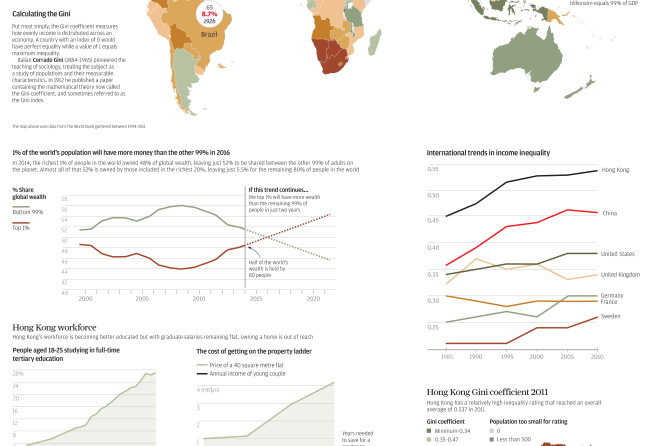Uncover the stark realities of income inequality in emerging giants like India and China – the disparity that’s shaping their futures.

Image courtesy of ready made via Pexels
Table of Contents
When we think about the economic challenges facing developing countries, one of the most pressing issues that comes to mind is income inequality. In countries like India and China, the gap between the rich and the poor is often stark, with a small elite segment of the population enjoying vast wealth while the majority struggle to make ends meet.
Economic Challenges in India
In India, income inequality is a significant problem, with the top 10% of the population holding a majority of the country’s wealth. This disparity is exacerbated by factors such as high levels of poverty, lack of access to quality education and healthcare, and systemic corruption that hinders economic progress for the most vulnerable members of society.
Despite these challenges, there are signs of hope and progress in India’s fight against income inequality. Government initiatives such as the Mahatma Gandhi National Rural Employment Guarantee Act (MGNREGA) have helped to lift millions of people out of poverty by providing employment opportunities and a social safety net for those in need.
Economic Challenges in China
China also grapples with income inequality, particularly between rural and urban areas. The rapid urbanization and economic growth seen in recent decades have created a wealth gap that is widening, leading to social unrest and discontent among marginalized communities.
However, China has made significant strides in addressing income inequality through targeted policies and reforms. Programs such as the Rural Cooperative Medical Scheme and poverty alleviation initiatives have helped to improve living standards for millions of people in rural areas and bridge the gap between urban and rural populations.
Economic Challenges in Kenya
In Kenya, income inequality is a major issue, with high levels of unemployment and poverty contributing to a widening wealth gap. The country’s reliance on agriculture as a primary source of income has left many rural communities vulnerable to economic shocks and fluctuations in commodity prices.

Image courtesy of www.scmp.com via Google Images
Despite these challenges, Kenya has taken steps towards inclusive growth and economic development. Initiatives such as the Vision 2030 development blueprint and investments in infrastructure and technology are aimed at creating opportunities for all citizens and reducing income inequality across the country.
Economic Challenges in Bangladesh
Income inequality in Bangladesh is a pressing concern, with the garment industry – a key economic driver – facing criticism for poor working conditions and low wages. This has led to calls for better labor rights and protections for workers who are essential to the country’s economic growth.
Despite these challenges, Bangladesh has shown resilience and determination in addressing income inequality. The government’s focus on building a strong social safety net, expanding access to education and healthcare, and promoting sustainable development has the potential to uplift millions of people out of poverty and create a more equitable society.
Economic Challenges in Sri Lanka
In Sri Lanka, income inequality is a complex issue that is influenced by factors such as ethnic tensions, political corruption, and infrastructure development. The legacy of the civil war and the Easter Sunday attacks have further compounded economic challenges and hindered efforts to reduce inequality.

Image courtesy of www.scmp.com via Google Images
However, Sri Lanka is not without hope. The country has made progress in rebuilding communities affected by conflict, promoting reconciliation and unity among diverse populations, and investing in infrastructure projects that have the potential to create jobs and stimulate economic growth for all citizens.
Economic Challenges in Brazil
Brazil is known for its rich cultural heritage and natural beauty, but the country also grapples with income inequality on a large scale. The gap between the wealthy elite and the rest of the population is significant, with issues such as political corruption and environmental degradation exacerbating the problem.
Despite these challenges, Brazil is making strides towards a more equitable future. Grassroots movements, government programs, and international partnerships are working to address income inequality, promote social justice, and protect the environment for future generations.
Conclusion
While income inequality remains a significant challenge for developing countries like India, China, Kenya, Bangladesh, Sri Lanka, and Brazil, there is reason for optimism. Through targeted policies, investments in education and healthcare, and a commitment to inclusive growth, these countries have the potential to create a more equitable and prosperous future for all citizens.
By working together, supporting grassroots efforts, and advocating for positive change, we can help bridge the gap between the haves and the have-nots, create opportunities for all, and build a more just and sustainable world for generations to come.
Generated by Texta.ai Blog Automation
